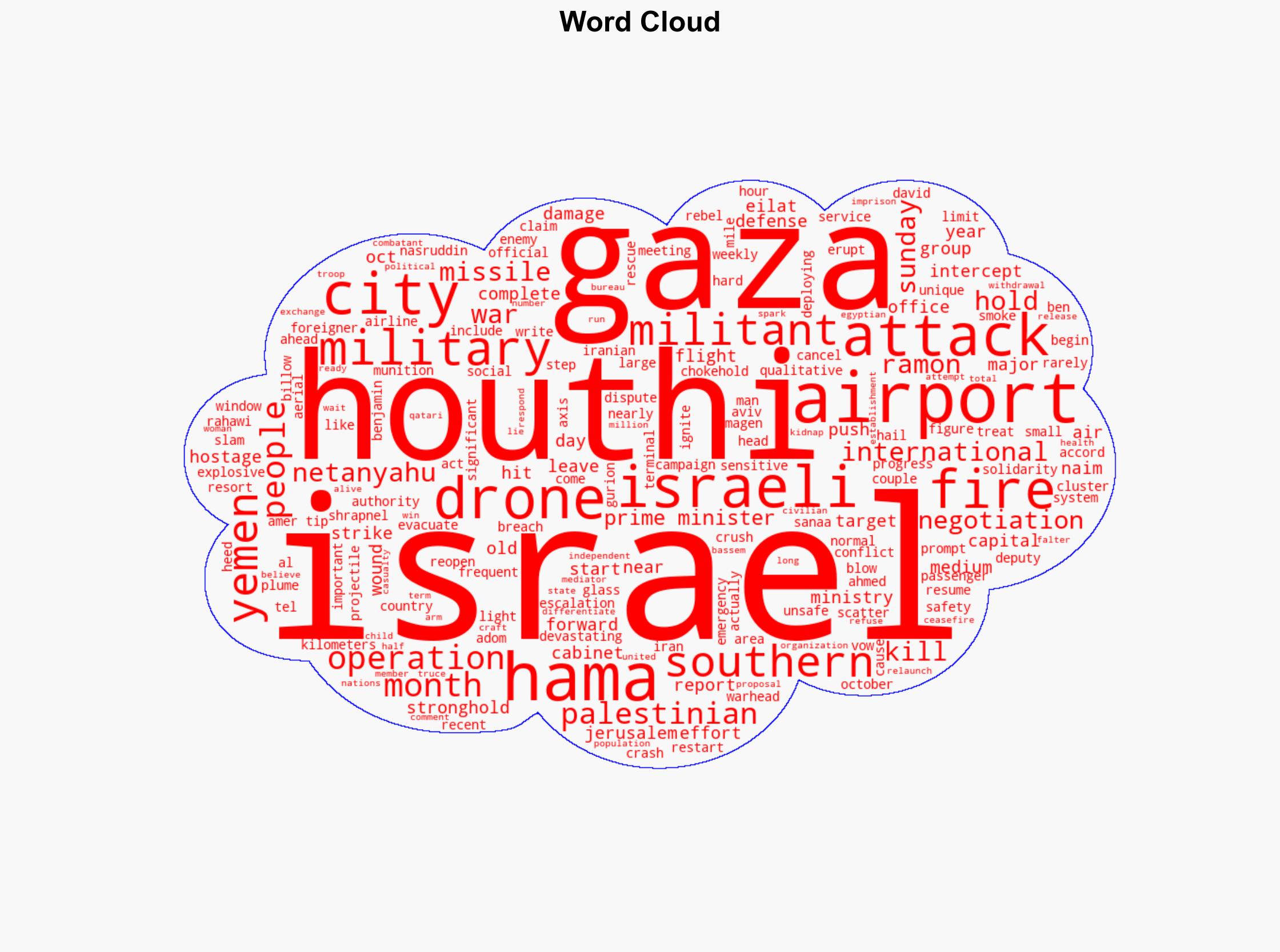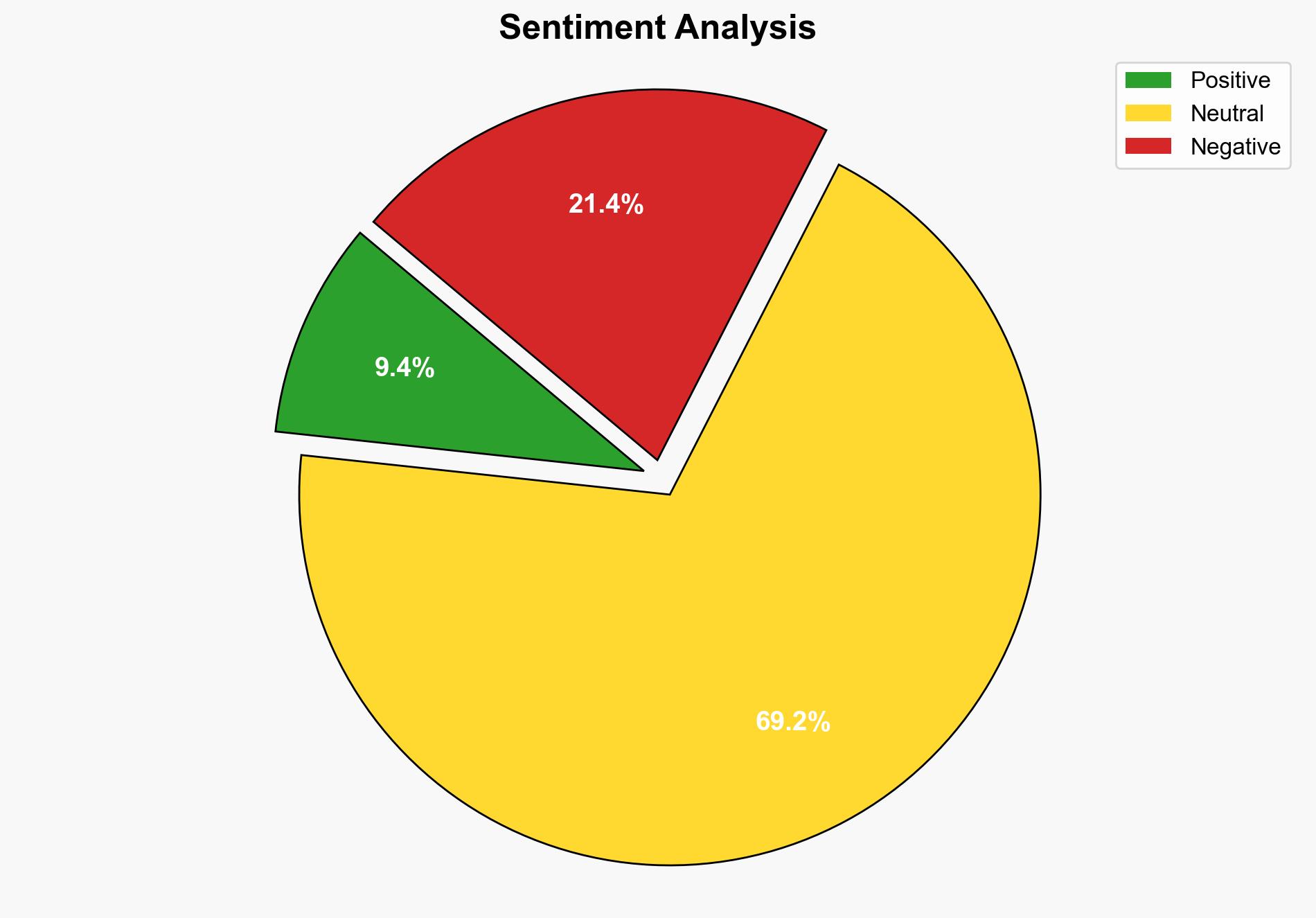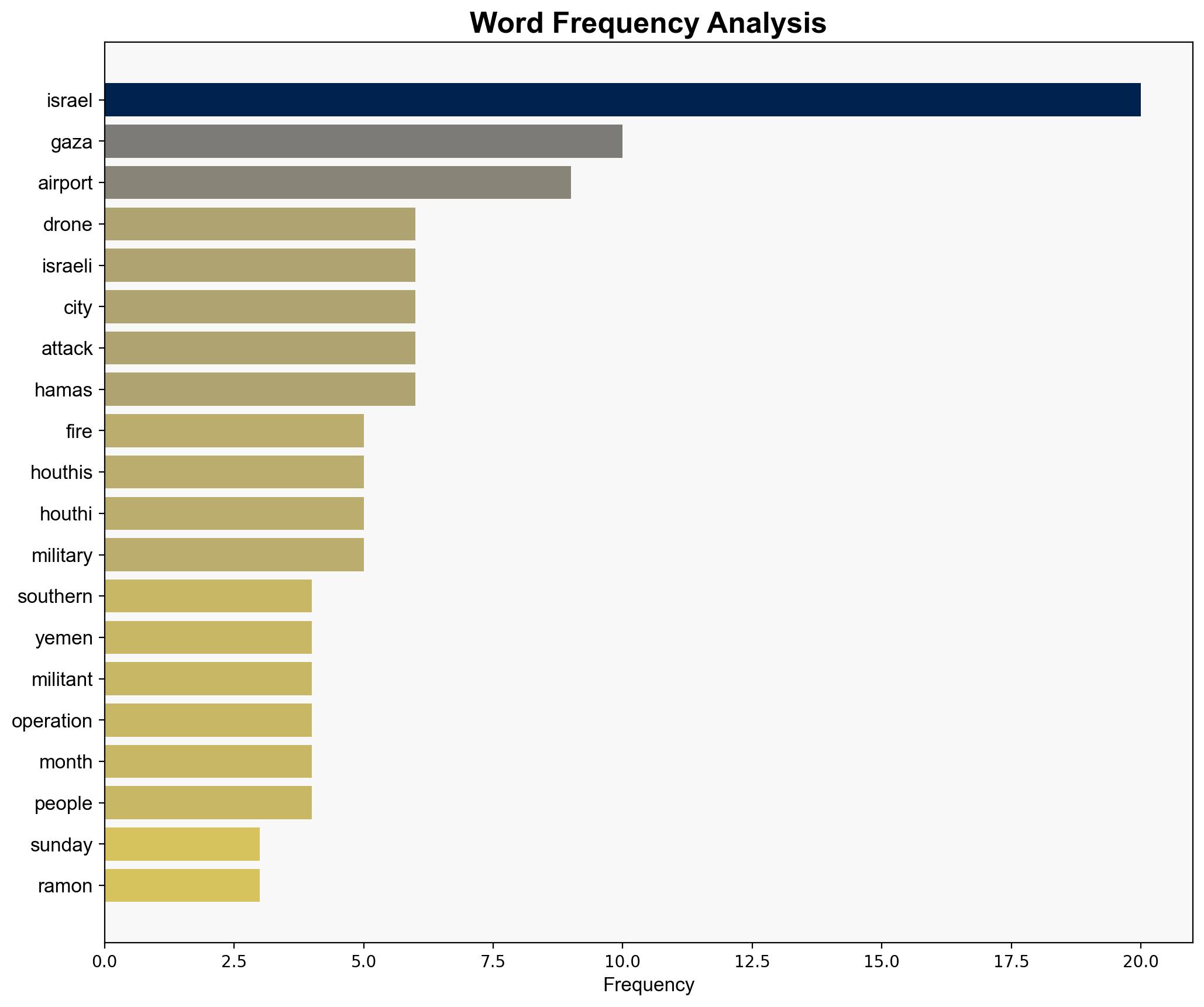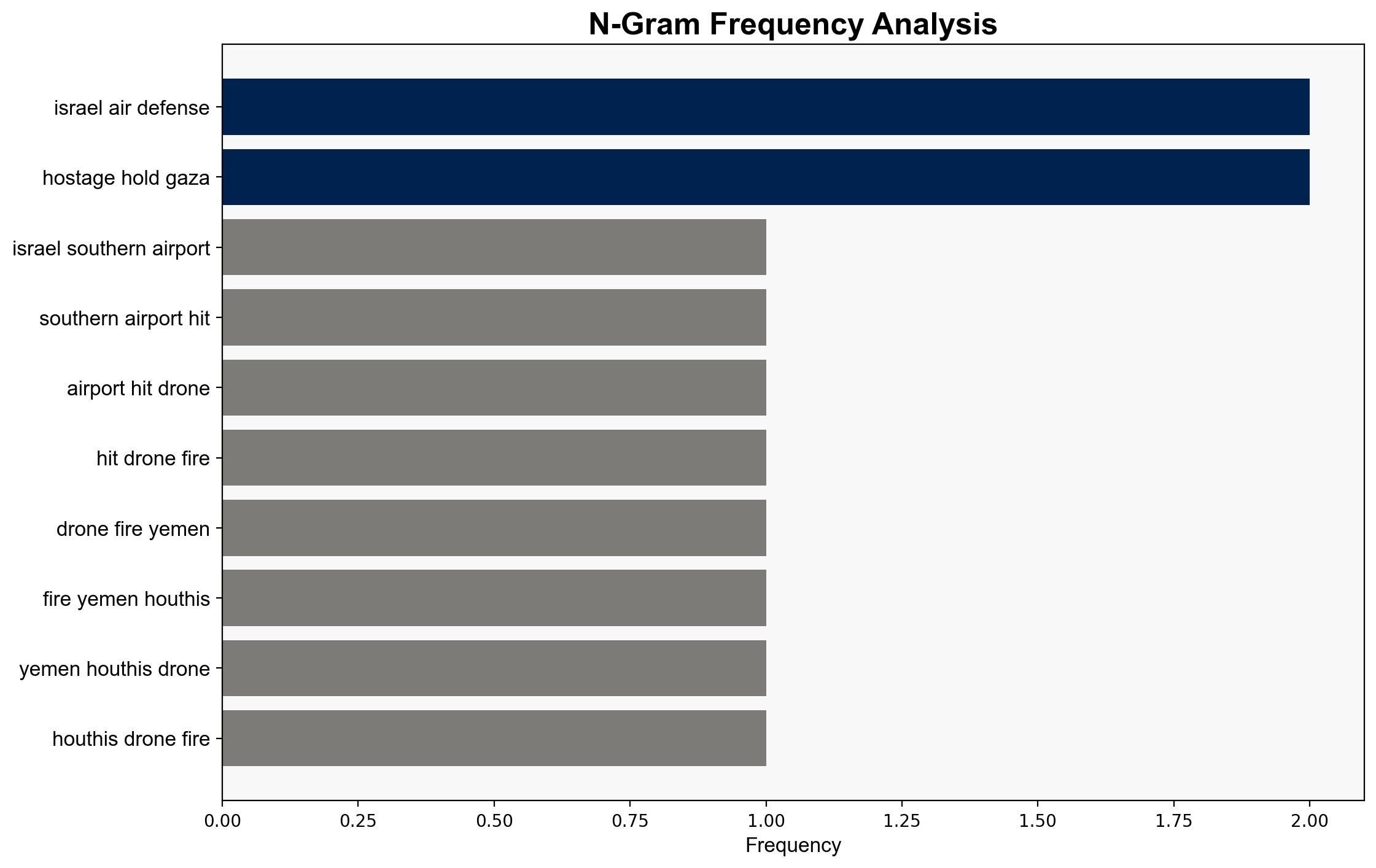Israel’s southern airport hit by drone fired by Yemen’s Houthis – CBS News
Published on: 2025-09-07
Intelligence Report: Israel’s southern airport hit by drone fired by Yemen’s Houthis – CBS News
1. BLUF (Bottom Line Up Front)
The drone attack on Israel’s Ramon International Airport by Yemen’s Houthis represents a strategic escalation in regional hostilities, potentially coordinated with broader Iranian-backed efforts. The most supported hypothesis is that this attack is part of a deliberate strategy to pressure Israel and its allies by targeting critical infrastructure. Confidence level: Moderate. Recommended action: Enhance regional defense coordination and intelligence sharing to preempt further attacks.
2. Competing Hypotheses
1. **Coordinated Regional Strategy**: The attack is part of a coordinated effort by Iranian-backed groups to destabilize Israel and its allies, leveraging the ongoing conflict with Hamas to stretch Israeli defense capabilities.
2. **Independent Houthi Initiative**: The Houthis acted independently to assert their capabilities and influence, using the attack as a demonstration of solidarity with Palestinians and to gain leverage in regional negotiations.
3. Key Assumptions and Red Flags
– **Assumptions**: The first hypothesis assumes a high level of coordination between Iran-backed groups, while the second assumes the Houthis have sufficient autonomy and resources to act independently.
– **Red Flags**: The timing of the attack coinciding with Israeli operations in Gaza suggests potential coordination, but lack of direct evidence linking the Houthis’ actions to Iranian directives raises questions.
– **Blind Spots**: Limited visibility into internal Houthi decision-making processes and potential Iranian influence.
4. Implications and Strategic Risks
– **Escalation Risks**: Increased attacks on Israeli infrastructure could provoke broader regional conflict, drawing in additional state and non-state actors.
– **Economic Impact**: Disruption of air travel and potential damage to tourism and trade sectors.
– **Geopolitical Dynamics**: Strained relations between Israel and neighboring countries, potentially affecting peace negotiations and alliances.
5. Recommendations and Outlook
- Enhance regional air defense systems and intelligence sharing to detect and intercept future threats.
- Engage in diplomatic efforts to de-escalate tensions, leveraging international partners to mediate between conflicting parties.
- Scenario Projections:
- **Best Case**: Successful diplomatic intervention leads to a reduction in hostilities and stabilization of the region.
- **Worst Case**: Escalation into a broader regional conflict involving multiple state actors.
- **Most Likely**: Continued sporadic attacks with limited but significant impact on Israeli infrastructure and regional stability.
6. Key Individuals and Entities
– Nasruddin Amer: Deputy head of the Houthi media office, publicly claimed responsibility for the attack.
– Benjamin Netanyahu: Israeli Prime Minister, leading the response to ongoing regional hostilities.
– Ahmed al-Rahawi: Houthi Prime Minister, involved in the broader conflict dynamics with Israel.
7. Thematic Tags
national security threats, cybersecurity, counter-terrorism, regional focus





